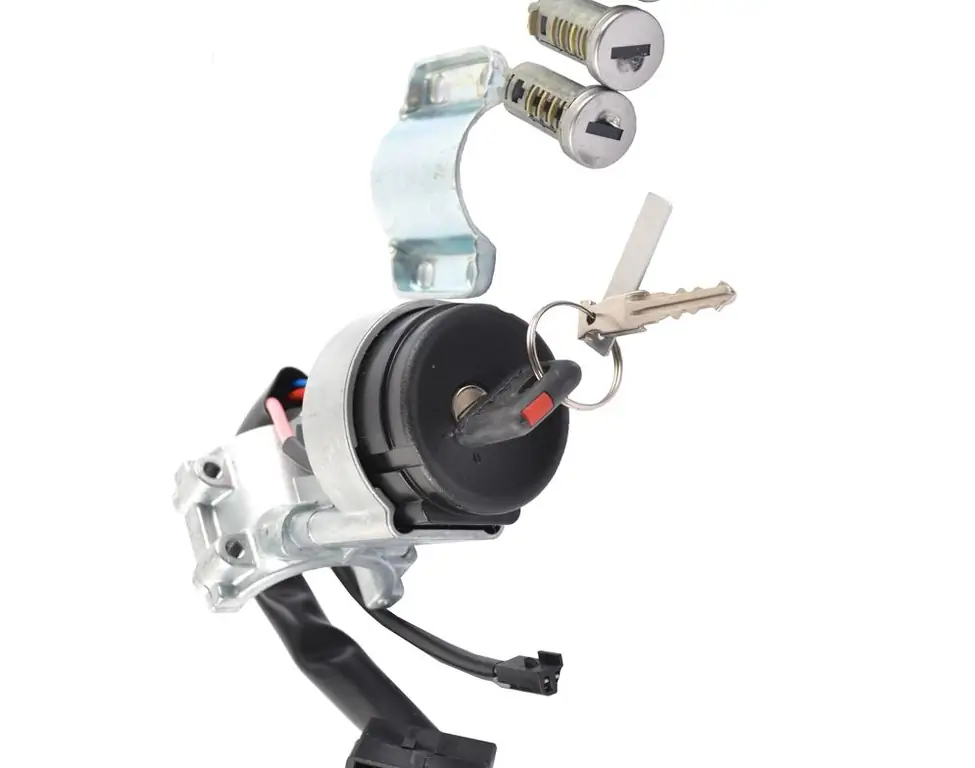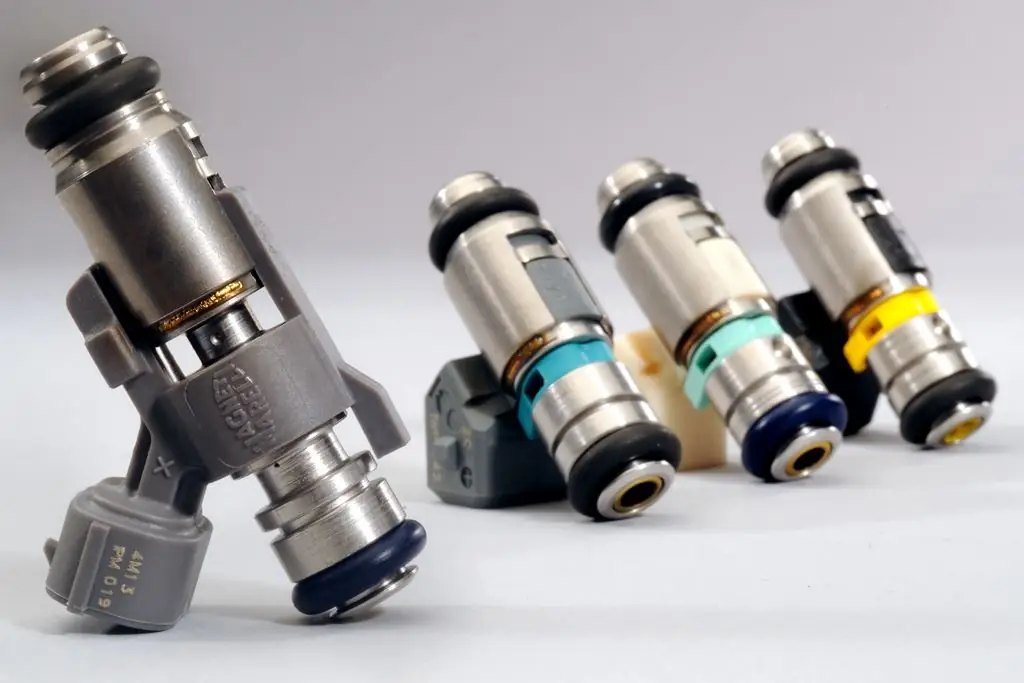2025 Author: Erin Ralphs | [email protected]. Last modified: 2025-01-22 21:14:16
The engine has a lot of critical components and mechanisms. One of them is the flywheel. It is this node that transmits the generated torque to the box through the clutch. Also, thanks to the flywheel, the engine rotates when the starter is engaged (when trying to start). In addition, the unit is designed to dampen vibrations and vibrations, and smoothly transfer forces to the box. In today's article, we will pay attention to such a type of mechanism as a damper flywheel. Such elements have been put on Volkswagen for a long time. Statistics show that more than half of modern foreign cars with manual transmission are equipped with this type of flywheel.
Characteristic
So, what is this element? The damper flywheel (dual-mass) is a mechanical disc-shaped assembly. On the one hand, it is fixed to the transmission, on the other - to the engine crankshaft. Additionally, it has a crown with teeth, due to which it can rotate when the starter gear is engaged. The main task of the element is the transmission and smoothing of torsional vibrations that come from the engine.

It is worth noting that the damper flywheel has some differences from the usual ones. So, earlier cars were equipped with simple flywheels made of disc-shaped cast metal. These elements could not equalize the moment and smooth out vibrations. All impacts went directly to the box and clutch. And how exactly the damper flywheel is arranged on the T5 and other cars, we will consider below.
Design
The main difference from single-mass flywheels is the presence of two disks. They are combined into one device. Each disc is attached to its source - the box and the engine. In this case, the elements are able to freely rotate from each other. The discs are interconnected by a bearing.
But how is the torque transmitted from the motor to the box through such a flywheel, because the discs rotate freely relative to each other? For this, springs and flanges are provided in the design. They can be of different shapes - in the form of a gear, an asterisk, or a polygon. These elements are closed with a sealing cover. Also note that the flanges and springs under this cover are filled with special grease.
Total damper flywheel design includes:
- Primary drive.
- Secondary disk.
- Arc spring.
- Bearing.
- Seal cap.
- Flange.

Features of work
Every year engineers create more and more powerful and efficient engines. Not so long ago, a one and a half liter engine developed no more than 80 horsepower. Now engines with such a volume are given out 110 or more. More power is good, but with increasing torque, acoustic and vibration comfort worsened. Various vibrations were constantly transmitted to the body.

Damper flywheel was created for this purpose. It transmits torque evenly, without jerks. The flywheel itself works very simply. As we said earlier, one part of it is connected to the box, the other to the engine. So, when the first part of the flywheel deviates to the maximum angle, the moment is transferred to the second disk. And all vibrations and shocks are smoothed out thanks to damper springs. Note that the same springs are on the clutch element. However, they already smooth out the loads that are assigned specifically to the disk.
About malfunctions and resource
Repair damper flywheel may be required on a run of 200 thousand kilometers. This mechanism often has such a resource. How to check the damper flywheel? Malfunctions can be judged by the following signs:
- Screeching when stopping and starting the engine (as if the starter is still working).
- Clicks during dynamic acceleration.
- Characteristic vibrations. This happens especially often at idle. As they grow, the vibrations gradually subside.
With what defects canface the owner of the car with a damper flywheel? Among the problems, first of all, it is worth noting the leakage of lubricant, which is under the sealing cover. Also, malfunctions can be judged by various creases, scratches and cracks on the surface of the element. All this can be seen visually by removing the box and clutch assembly. If outwardly there is no damage, but vibrations and sounds remain, it can be assumed that there are defects inside (or the damper and spring element is broken).

Diagnosis will be more accurate at a specialized stand, where the master will check the element for fluctuations.
About renovation
Replacing the damper flywheel with a new one is rarely done by our owners. Most often, they resort to a cheaper solution - repairs. The fact is that the cost of a new flywheel is about 1 thousand dollars. And the repair price is no more than 500. But the problem is complicated by the fact that few of the craftsmen competently restore dual-mass flywheels. Also note that the repair of the part will be impossible if there are cracks or dents on the case. In this case, the only way out is to replace it with a new one.
The process of restoring the old one involves dismantling the element and replacing its insides. During the repair:
- Replace all broken items.
- Installing new bolts.
- Flywheel balancing (required).
- Relubrication.

Experts do not recommend saving ondetails. If you install cheap springs, such a flywheel will soon require re-repair. As for the resource of the restored flywheel, it is about 200 thousand kilometers. But this is possible only if high-quality parts were used and the repair itself was carried out according to technology.
Flywheel Pros
Is it worth buying a car with a similar mechanism? To answer this question, you need to consider all the pros and cons of the device. So among the benefits it is worth noting:
- Smoother shifting.
- Increased resource of internal combustion engine and transmission parts (since they are not subject to increased vibration load).
- Reduced moment of inertia when switching gears.
- Saving space in the clutch housing. This is an important point for vehicles with small displacement.
Cons
But there is another side of the coin. First of all, it is worth noting the price of the mechanism itself. Such an element is very expensive, which certainly affects the cost of the car itself. It is also necessary to note the resource, which is lower than that of single-mass elements. When repairing, you should pay a large amount of money so that the part will serve its 150-200 thousand kilometers again.

But even with these shortcomings, the damper flywheel is increasingly being used not only on cars, but also on commercial vehicles. Technologically, it is more advanced, but, at the same time, expensive to repair. Buying a car with such a flywheel is worth itonly if there are no obvious signs of wear. Otherwise, you will have to immediately pay about $ 500 for repairs, or even more. If we talk about new cars with a guarantee, buying cars with a similar flywheel is completely justified here.
How to save the resource?
To extend the life of the damper flywheel, you should know some rules:
- You can not significantly load the car. This applies to those who prefer to drive with a trailer. This puts an enormous load on the flywheel, and its life is significantly reduced.
- Exclude towing other cars (for the same reason).
- Do not keep the clutch pedal depressed when stopping at a traffic light. It is better to immediately move the gearshift lever to neutral.
- Don't drop the clutch when changing gears.
- Avoid abrupt starts and aggressive driving.
- Don't drive at low speeds. This is especially harmful for diesel vehicles. Such engines generate significant vibrations, as a result of which the load on the flywheel increases. In this case, the springs of the damper system wear out.

This is the only way to maximize the life of this element in the car.
Summing up
So, we found out what a damper flywheel is and what are its features. As you can see, this mechanism has a more complex device than single-disk counterparts. At the same time, the work of the damper flywheel is aimed at increasing comfort and reducing various vibrations. ATIn conclusion, it is worth noting that the price of maintaining a car with a manual transmission and such a flywheel will not be any cheaper than a car with a gun. After all, the resource of a torque converter automatic transmission can be more than 250 thousand kilometers. And the damper flywheel on a manual transmission serves one and a half times less. Therefore, you should not assume that a mechanical car will be cheaper to maintain and maintain. This is true only in the case of single-mass flywheels, which are now being abandoned by more and more automakers.
Recommended:
CDAB engine: specifications, device, resource, principle of operation, advantages and disadvantages, owner reviews

In 2008, VAG group cars entered the automotive market, equipped with turbocharged engines with a distributed injection system. This is a 1.8 liter CDAB engine. These motors are still alive and actively used on cars. Many are interested in what kind of units these are, are they reliable, what is their resource, what are the advantages and disadvantages of these motors
Dry sump: principle of operation, device, advantages and disadvantages

What features does a dry sump have and why is it better than a wet sump? Everything you need to know about the ICE lubrication system: device, principle of operation, main characteristics, details, advantages and disadvantages
"Lada-Kalina": ignition switch. Device, principle of operation, installation rules, ignition system, advantages, disadvantages and features of operation

Detailed story about the ignition switch Lada Kalina. General information and some technical characteristics are given. The device of the lock and the most frequent malfunctions are considered. The procedure for replacing with your own hands is described
Lightweight flywheel: features, device, advantages and disadvantages

One of the main elements of the engine is the flywheel. It is to him that the torque is transmitted from the torque shaft. The element is connected to the box through the clutch disc. It is one of the most expensive parts in the crank mechanism. What is this element and what does a lightweight flywheel give? Let's find out
Carburetor and injector: difference, similarities, advantages and disadvantages of carburetor and injection engines, principle of operation and expert reviews

For more than a hundred years, the car has firmly established itself in our lives. During this time, managed to become a familiar, everyday means of transportation. Let's see what the difference is between a carburetor and an injector, what advantages and disadvantages they have

